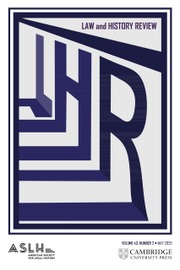Max WL Wong’s Legal Pluralism in Qing China: Transplantation and Transformation offers a bold, expansive treatment of Chinese legal culture of mostly the Republican era. The book’s ambition is commendable: to trace the layered complexities of legal pluralism from Qing China to its post-imperial legacies in Republican courts and colonial jurisdictions in Asia. Yet its scope and title promise more than the empirical foundation sustains. Despite intriguing insights, the book leans heavily toward Republican-era legal practices and post-Qing transformations. As such, readers seeking a sustained engagement with Qing legal pluralism may find the title misleading.
The book is structured in four parts. Part I lays the conceptual groundwork, introducing legal pluralism within the context of Qing China’s multiethnic empire. Wong situates Qing legal culture as a hybrid system, where state law interacted with customary, ethnic, and religious norms. But the argument falters in its early claim on page 7 that the Qing pursued a “policy of assimilation” without clarifying the object of that assimilation. Was it to Confucian ideals, to Manchu political order, to Han bureaucratic practice, or to broader imperial unification? The ambiguity invites conceptual slippage across the chapters that follow.
Part II, comprising Chapters 1 through 3, is ostensibly the heart of the book’s analysis of Qing legal practice. Chapter 1 is the most directly concerned with Qing institutions. It revisits the long-noted Qing policy of “litigation avoidance” (息讼), examining how magistrates discouraged formal lawsuits through mediation and informal justice mechanisms. Wong draws on normative sources such as the Sacred Edict and local records to reconstruct the ideological and administrative basis for discouraging litigation. However, the chapter falls short of providing the empirical scaffolding to support its claims. There is no systematic analysis of litigation rates, nor is there quantitative evidence demonstrating that government advocacy effectively reduced the volume of lawsuits. Notably absent are archival legal cases from the No. 1 Historical Archives or the Ba County archive, essential sources for verifying the local application of litigation policy. Without them, the argument remains largely speculative.
Chapter 2 shifts abruptly to the Republican period, analyzing how the Supreme Court of the early Republic interpreted divorce provisions inherited from the Qing Code. The court’s adoption of Western legal concepts reveals a moment of conceptual transition, where legal pluralism became a site of contestation between traditional codes and new legal frameworks. Yet the discussion, while engaging, marks a departure from Qing legal pluralism per se. Its connection to Qing law lies more in legal memory than legal structure.
Chapter 3 extends the Republican focus, exploring investigative reports on local customs commissioned during the late Qing and expanded under Japanese supervision in Republican territories. These reports offer rich documentation of regional variation in marriage practices. Wong uses these to argue that Chinese law was not just pluralistic across regions but within provinces. This insight is valuable and underscores the diversity of legal norms. Yet the evidence here is again Republican, not Qing. While the chapter speaks to the legacy of Qing codes, it provides little on Qing-era legal pluralism as practiced or adjudicated.
Part III (Chapters 4–6) examines the transplantation of Chinese legal norms into Taiwan, Hong Kong, and the Straits Settlements under Japanese and British colonial rule. Chapter 4 shows how customary Chinese practices, especially in family law, survived under Japanese legal authority in Taiwan. Chapter 5 focuses on Hong Kong’s Strickland Report (1953), an effort to reform Chinese customary law under British rule. Chapter 6 discusses Chinese family law in the Straits Settlements.
Part IV, the conclusion, returns to the theme of legal pluralism, emphasizing its resilience and adaptability in the face of Westernization, colonization, and migration. Wong reflects on methodological challenges and suggests avenues for future research. These suggestions are particularly well taken, and they echo some of the unresolved tensions in the book.
Conceptually, the book vacillates between acknowledging local variation and invoking a unified “Chinese legal norm” when comparing to Western influences. This raises a deeper question: what constituted the “Chinese legal norm,” if it is not itself a pluralistic and evolving construct? In the Republican period, did it mean a literal reading of the Qing Code, a normative ideal invoked by magistrates, or a pragmatic set of expectations shared among litigants, clerks, and officials? The book does not resolve this tension, and at times, it inadvertently reinscribes the very essentialism it seeks to critique.
Moreover, the book hints at but does not explore the deeper social questions embedded in legal pluralism: How did class and ethnicity shape legal access and outcomes? How did judges navigate plural norms across cases? Quantitative case analysis comparing legal rulings across Qing and Republican eras would greatly enhance our understanding of continuity and rupture. Wong’s book raises these possibilities, but it does not pursue them.
Wong has brought together a diverse range of materials, from Confucian texts to colonial reports, and placed Chinese legal history in a transregional frame. He challenges the common assumption that Chinese law was monolithic and static. And he offers readers a provocative reminder: legal pluralism was not only a feature of colonial legal orders but a deep structure of Chinese legal culture itself. It opens important conversations even where it leaves gaps. For historians of Chinese law, it serves less as a definitive account of Qing pluralism than as an invitation to refine, deepen, and historicize the very questions it raises.

